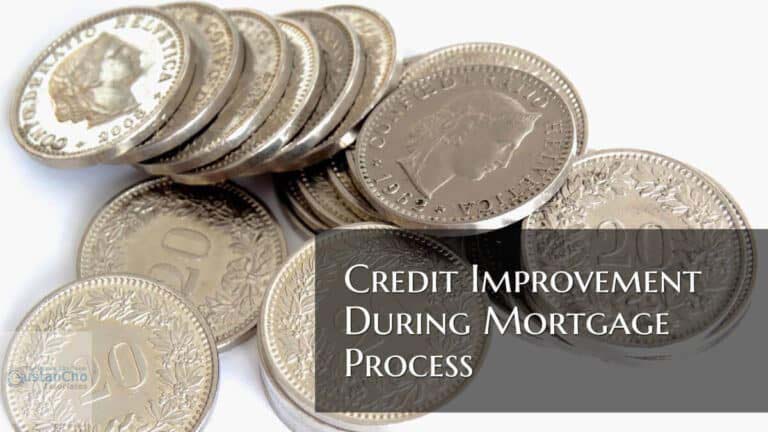How The Mortgage Process Work
In this guide on how the mortgage process work, we will cover the steps of the mortgage from the mortgage loan application to closing on traditional and non-QM loans. The overall non-QM mortgage process on non-prime loans is similar to traditional conforming mortgages. The mortgage process can be different among the various wholesale lenders. However, the difference is not huge. Individual mortgage lenders may have their own forms or different timelines for doing things.
The steps in the mortgage process and its business model are the same for all loan programs. The mortgage process is the same for FHA, VA, USDA, Conventional, Jumbo, and non-QM loans. The general business model for the mortgage process from mortgage loan application to closing is similar to all mortgage loans. In the following sections of this guide, we will cover the step-by-step phases of how the mortgage process works.
The Steps In The Mortgage Process
You are ready to buy a home but don’t have the cash to buy it outright. Don’t worry. You aren’t alone! Millions of homeowners leverage their investment with a mortgage. But the mortgage process sounds confusing and overwhelming. What if you could go into a mortgage application understanding the process, what you must do, and how to get approved? The mortgage loan process does not need to be stressful. Proper communication with your loan officer will avoid stress during the loan process. Keep reading, and you’ll be an informed borrower ready to handle the mortgage process like a seasoned pro.
Know How Much House You Can Afford
Before entering the mortgage process, determine how much you can afford. A lender may approve you for much more, but ask yourself what you’re comfortable paying each month. That’s what’s most important. Review your budget and determine your available money for a mortgage payment. Will this force you to sacrifice in other areas? If so, make sure you’re comfortable with those sacrifices.
Most lenders require your mortgage payment to take up less than 28% or less of your monthly income, or your total debts shouldn’t exceed 43% – 50% of your monthly income. Figure out what you can afford each month, and you’ve taken the correct first step to homeownership.
Click here to qualify for your mortgage loan
Complete a Mortgage Application for Pre-Approval
When you’re ready to look at homes, get pre-approved for a mortgage first. We recommend starting this process a month before you’re prepared to look at houses. We also recommend that you don’t look at homes until you’ve completed this process. Sellers and real estate agents won’t willingly let you see the house and definitely won’t accept an offer if you don’t have a pre-approval letter from a lender.
How Can I Get Pre-Approved For a Mortgage?
To get pre-approved, use these steps:
- Complete the mortgage application
- Allow the lender to check your credit
- Provide income documentation, including your paystubs, W-2s, and tax returns (if required)
- Provide asset documentation proving the funds for your down payment and closing costs
- Allow the lender to verify your employment
Once the lender reviews your documentation and ensures you can afford the loan, you’ll receive a pre-approval letter that includes the following information:
- Loan amount
- Estimated rate
Loan Program - Loan term
- Outstanding conditions you must clear
- Expiration date
It’s best to get pre-approved by a few lenders so you can compare your options.
Look at Homes and Place an Offer
After you’re pre-approved and have the pre-approval letter, you can view homes and place an offer when ready. You and the seller may negotiate back and forth, but once you agree on the price and terms of the sale, you’ll sign a contract, and the mortgage process goes into full swing.
Choose your Lender and Move Forward with the Process
Now that you have your pre-approval options choose the lender you will move forward with and submit your sales contract. Along with the contract, gather documents for any other conditions you must satisfy. At the same time, your lender will order an appraisal and title search on the property. If you are paying for a home inspection, you should order it immediately to get the ball rolling. Lenders don’t require the inspection report, but if you have an inspection contingency on your contract, you want to know if the home is in good condition as soon as possible.
Talk to our expert to get a loan, click here
The Underwriter Continues Clearing Conditions
As you send documentation in, the mortgage underwriters continue to clear your conditions. Sometimes, red flags require them to ask you for other documentation. The most requested document is a Letter of Explanation. Suppose the underwriter comes across any issues during the underwriting process. In that case, they may ask for a LOX from you explaining the situation.
You need to get accustomed to getting a letter of explanation request from the mortgage underwriter. You should also supplement the letter with proof of what you’ve described. For example, the lender may want a reason if you have an employment gap. If you have documentable reasons, write a letter and provide the evidence to support your statements.
Clearing Conditions For a Clear To Close
A clear to close is the lender giving its blessings on the borrowers. All these steps in the mortgage process from application, to underwriting, to clearing conditions, is to lead to the final clear to close. The mortgage process is an actual process and there are no shortcuts.
Once underwriters receive the appraisal and title work, they’ll review it to ensure it meets the loan’s guidelines. The appraisal must support the price you agreed to pay for the home. The title report must show no liens on the property except the borrower’s current mortgage. Suppose the appraisal or title work has issues. In that case, your loan officer and loan processor will work with you and the seller to clear the conditions if possible. This can take a little time, so get them ordered as quickly as possible.
Purchase Homeowner’s Insurance
Once the appraisal and title have cleared, it’s time for you to buy homeowner’s insurance. To remove the homeowner’s insurance closing condition, you must have a paid receipt for the first 12 months of insurance. If you haven’t chosen an insurance company yet, now’s the time to shop around and secure your policy so you can close on time.
Close On Your Home Loan
The final step is for your loan officer to tell you that your loan is ‘clear to close.’ This means you’ll receive your Closing Disclosure three days before your scheduled closing date. You can review the CD and make sure all numbers make sense. If you have any questions, clear them up before the closing.
At the closing, you’ll sign a stack of paperwork, including your mortgage deed and note that makes you the new owner of record on the property. It also gives the lender the right to your property if you don’t hold up your end of the bargain and pay your mortgage on time.
Final Thoughts
The mortgage process can be smooth and easy when you work with the right company. Understanding what to expect, how to clear conditions, and how long each step takes is essential. Choosing the right home is one of your most important decisions. Ensure you’re ready to handle the process and work with a reputable mortgage broker with hundreds of wholesale partners, allowing you to find the perfect loan to buy your home.
Click here to qualify for a mortgae loan with GCA group
Frequently Asked Questions (FAQs)
- What is the mortgage process?
The mortgage process involves applying for a home loan, including submitting financial documents, undergoing a credit check, getting pre-approved, finding a lender, and closing the loan. - How do I get started with the mortgage process?
You can start the mortgage process by researching lenders, gathering necessary financial documents such as pay stubs and tax returns, and getting pre-approved for a loan amount. - What does pre-approval mean, and why is it significant?
Pre-approval entails an initial assessment by a lender to ascertain the amount you’re eligible to borrow for a mortgage. It’s important because it gives you a clear budget and shows sellers you’re a serious buyer. - What documents do I need for the mortgage process?
Common documents needed include proof of income, employment verification, tax returns, bank statements, and identification. The specific criteria can differ based on the lender and the type of loan. - What is the typical duration of the mortgage process?
The duration of the mortgage process varies, spanning from several weeks to a few months, contingent on factors like the complexity of your finances, the lender’s workload, and the housing market conditions. - What is the difference between pre-qualification and pre-approval?
Pre-qualification is an informal assessment of your finances to estimate how much you could borrow. At the same time, pre-approval is a more formal process that thoroughly reviews your financial documents and credit history. - What factors affect mortgage approval?
Factors impacting mortgage approval include your credit score, debt-to-income ratio, employment history, down payment amount, and appraised value. - What types of mortgages are available?
Typical mortgage options encompass fixed-rate mortgages and adjustable-rate mortgages (ARMs), FHA loans, VA loans, and USDA loans. Each type has its terms, interest rates, and eligibility requirements. - What are closing costs, and how much should I expect to pay?
Closing costs are fees for finalizing the mortgage loan and purchasing the home. They typically include loan origination fees, appraisal fees, title insurance, and escrow fees. Closing costs generally fall within the range of 2% to 5% of the loan amount. - What happens at the closing of the mortgage process?
At the closing, you’ll sign all the necessary paperwork to finalize the mortgage loan and transfer property ownership. You’ll also pay any remaining closing costs and receive the keys to your new home.
Do you have other questions about the mortgage process? You can contact us at Gustan Cho Associates by calling (800) 900-8569 or text us for a faster response. You can also email us at alex@gustancho.com. Our expert Loan Officers are available even during weekends and holidays!








